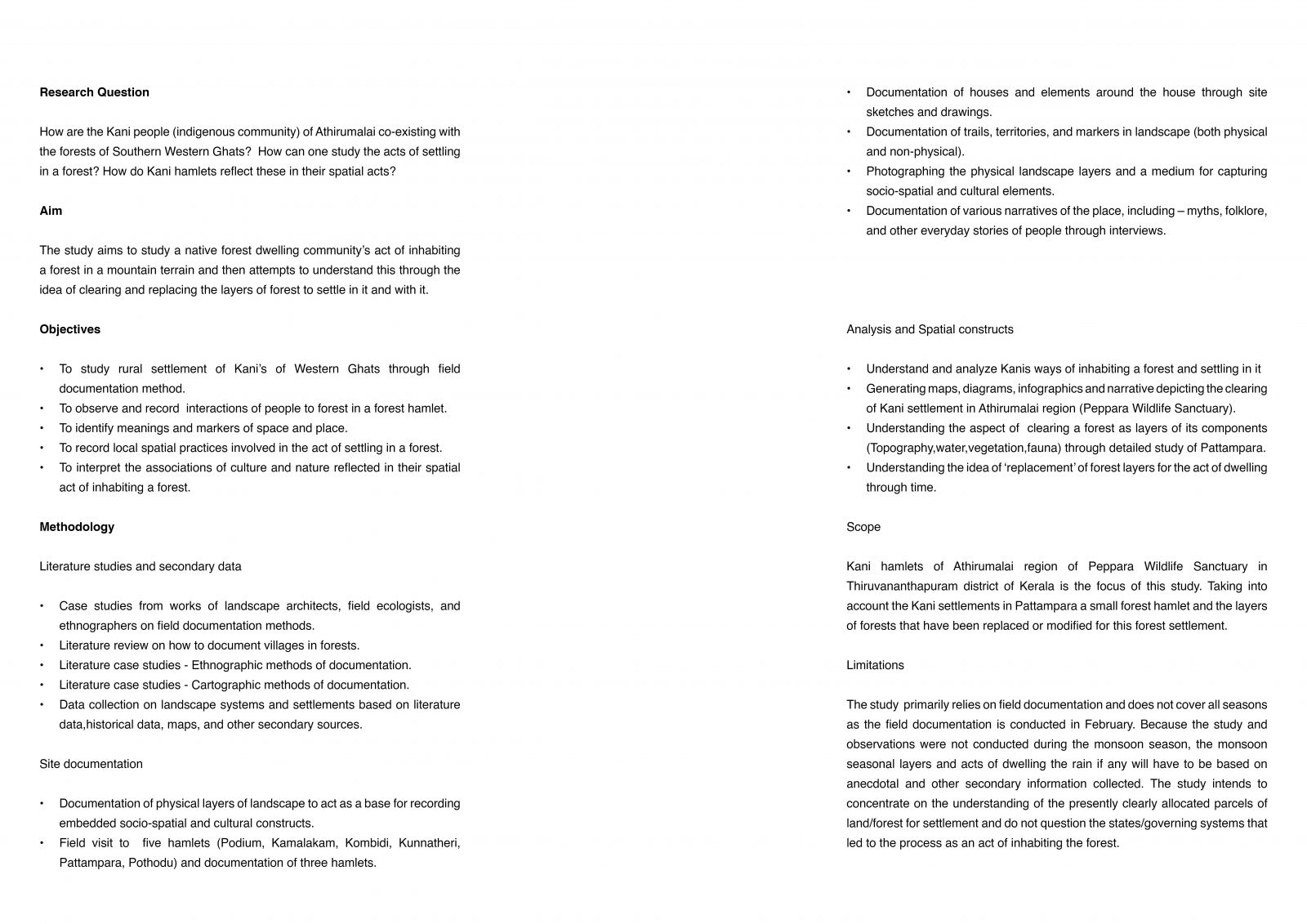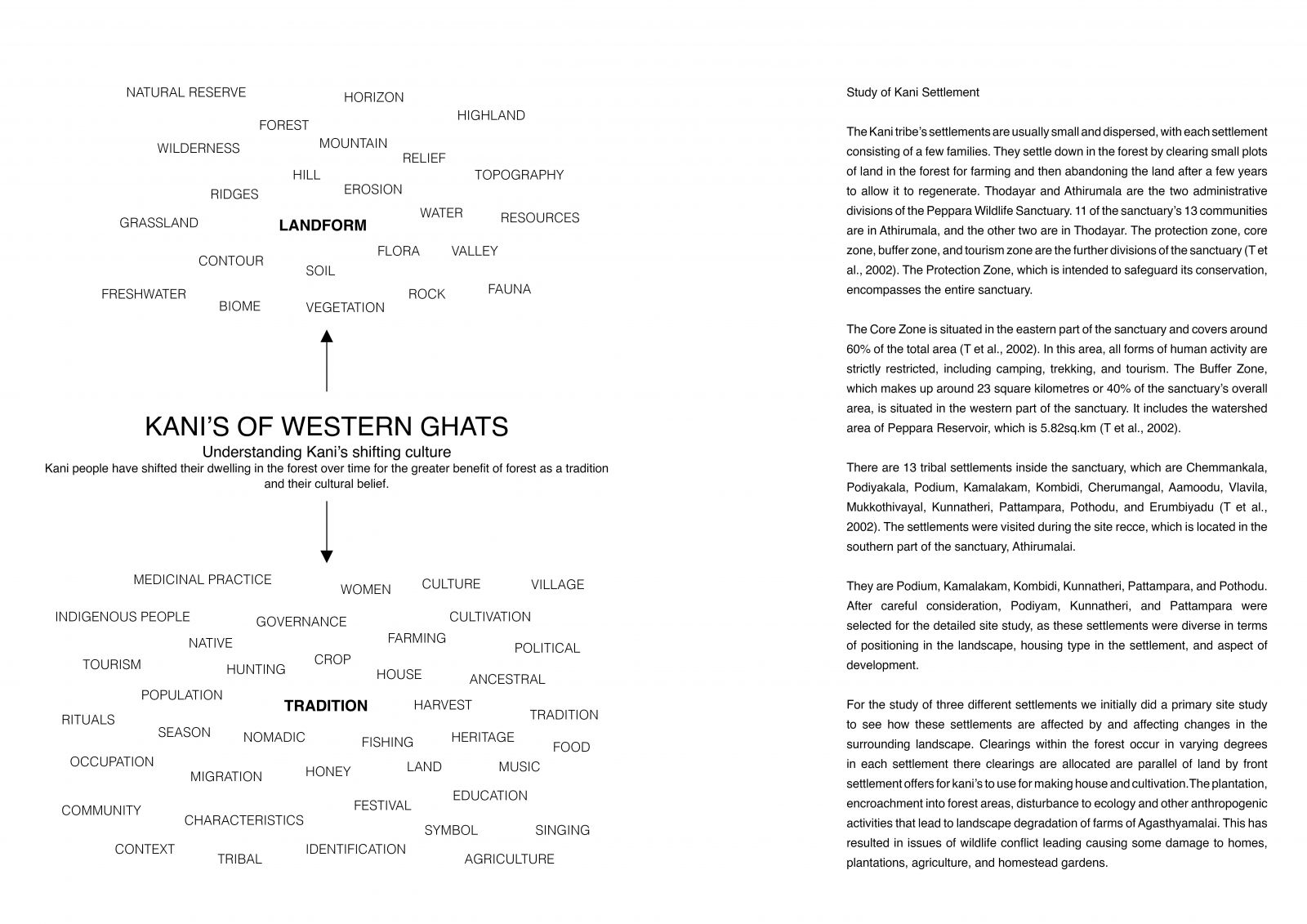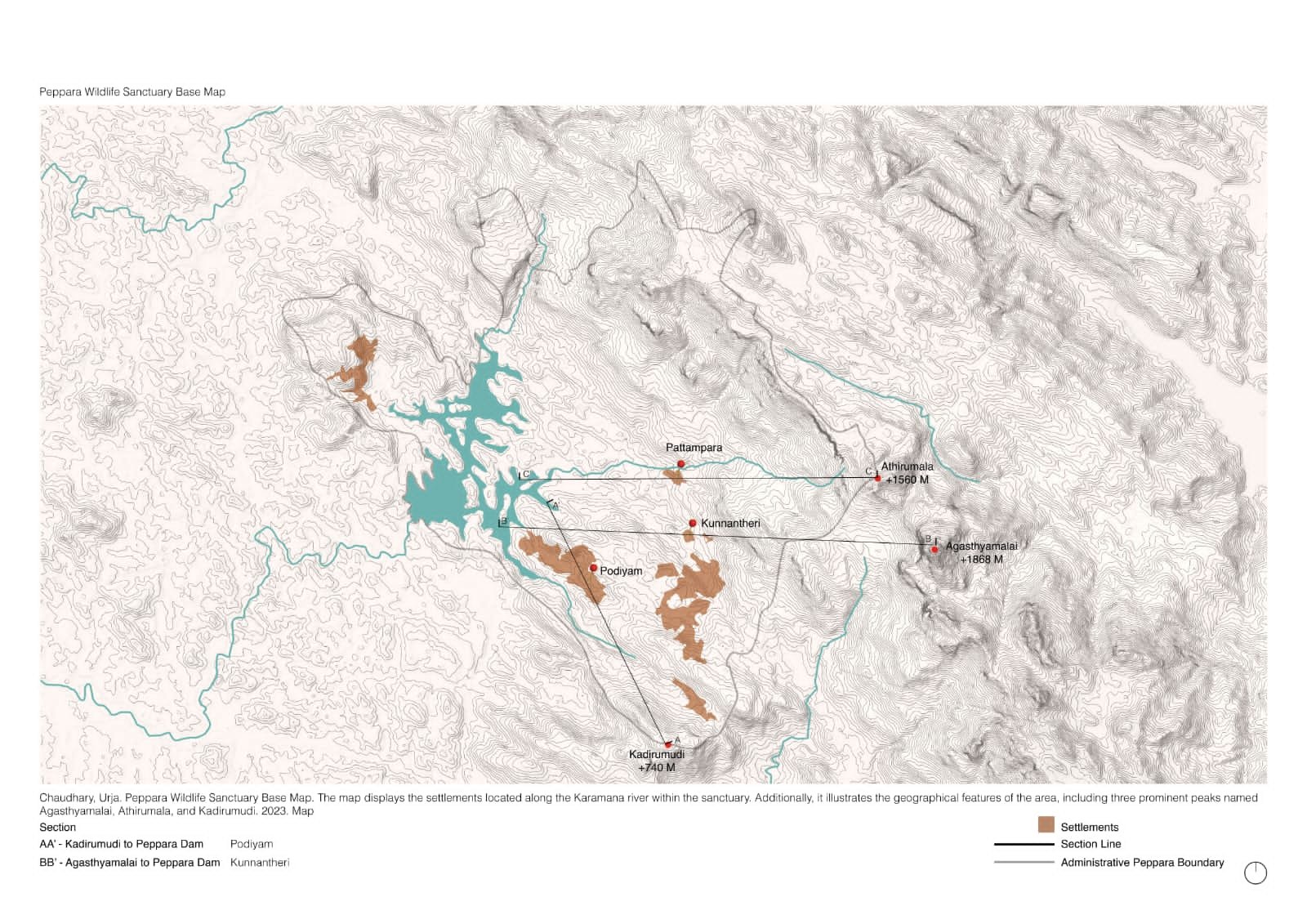Your browser is out-of-date!
For a richer surfing experience on our website, please update your browser. Update my browser now!
For a richer surfing experience on our website, please update your browser. Update my browser now!
The activities, tasks, and rituals by which humans inhabit their surroundings are connected in many ways to the tangible component of landscape. This is reflected in people’s perception and experience of the place. The act of settling is an important aspect that represents a communities wider and nuanced understanding of their landscape. The way of life of indigenous communities are closely knitted to their natural settings. They possess a deep relation to nature and their culture reciprocates and celebrates this relationship in many ways (Shah, 2022). One such case in which this reciprocity becomes spatially evident is the way in which they are located and settled in a landscape. My proposed DRP studies this aspect of inhabiting a landscape - here a forest hamlet of Kani adivasis in Peppara wildlife Sanctuary of the Agasthyamalai reserve.
The study explores some such settlements that have evolved closely with their natural settings which depicts a coherent relationship between the built and unbuilt environments. Such a study enables us to recognise and understand the space-place relations of people and bring in awareness of local spatial knowledge that they carry. The study investigates how inhabitants navigate and negotiate, make , maintain and break and mark and unmark spaces of living in a village in forest. These acts of inhabiting and belonging to the landscape holds within them meanings of space and place. The study will try to understand and record this from a field observation method.
For doing so It adopts both formal and informal documentation and survey approaches from architectural documentation and landscape representation,and also relies on basic ethnographic methods of community interaction. The research attempts to spatialize/visualize the landscape-people association of native people and their settlement.



.jpeg)
.jpeg)
.jpeg)
.jpeg)
.jpeg)
.jpeg)
.jpeg)